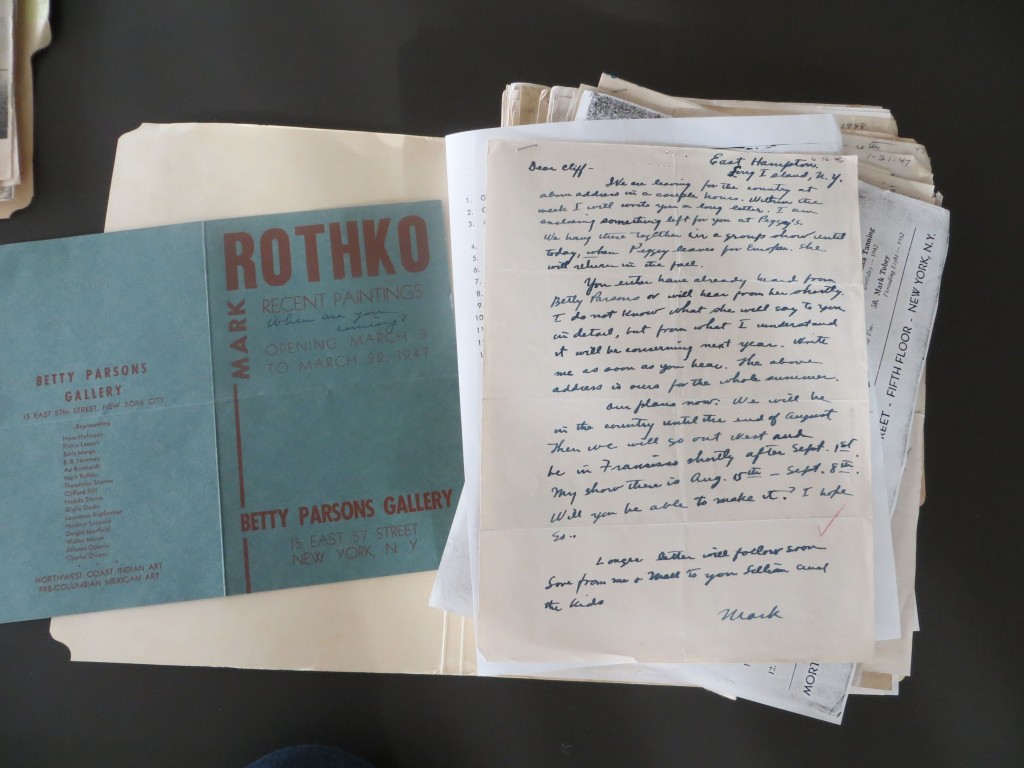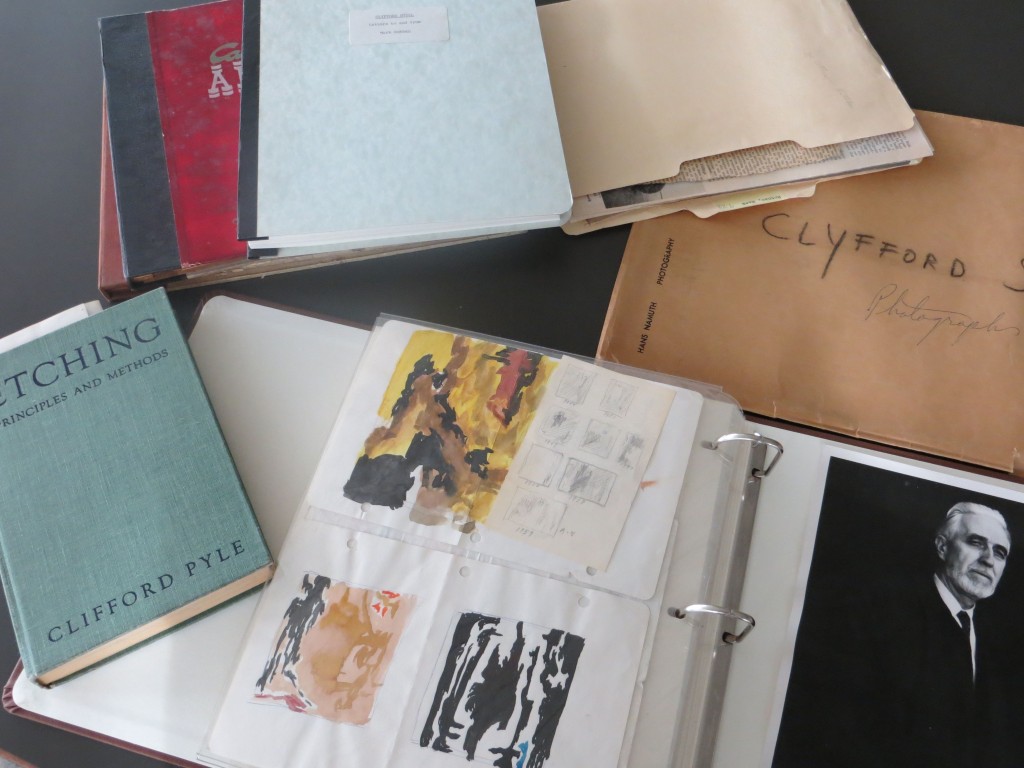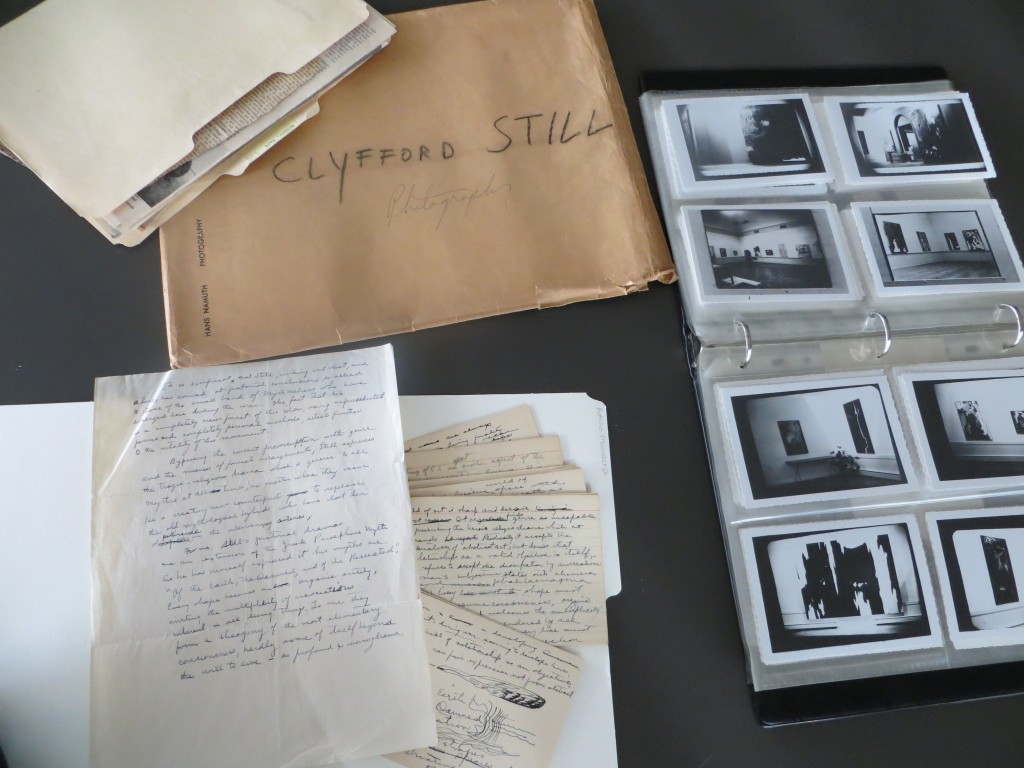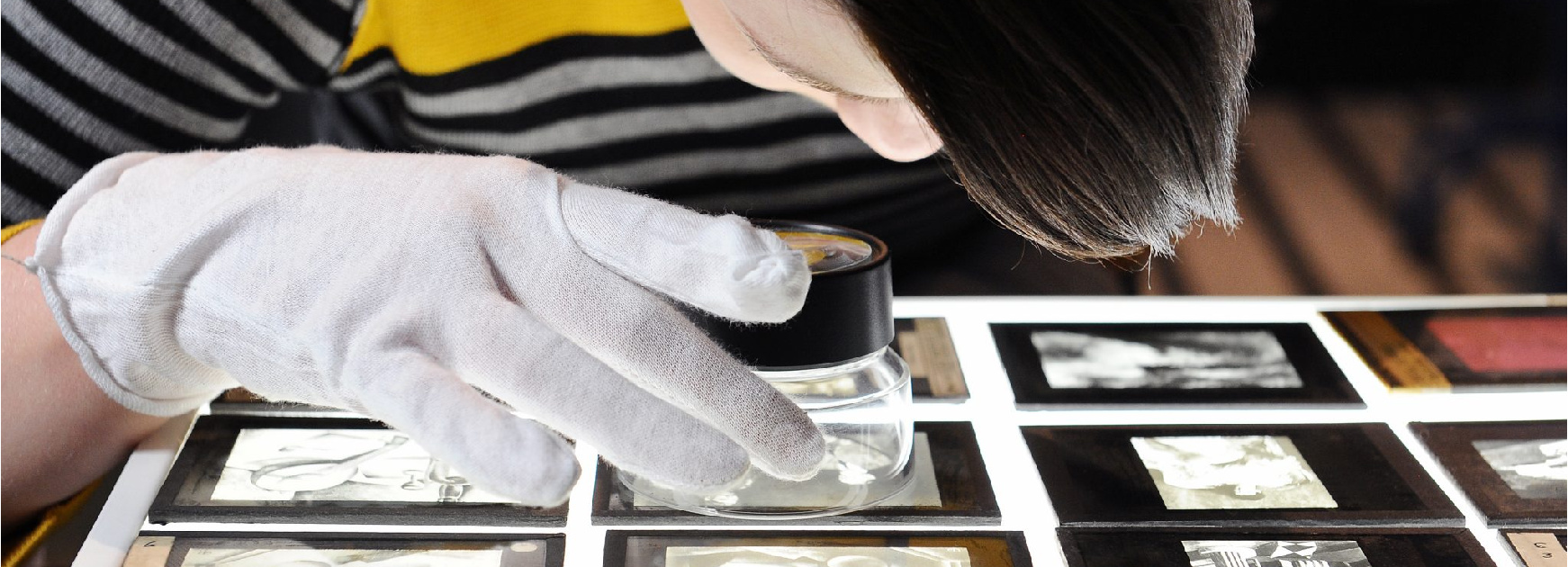By Kristin Feldkamp, Editorial Content Intern
In 2005, just one year after a team of Denver hopefuls (including then-Mayor John Hickenlooper) successfully convinced Still’s widow to make Denver the permanent home of her husband’s oeuvre, Patricia Still bequeathed her estate to the City of Denver, also. Patricia’s estate included several of her husband’s paintings as well as his vast archives carefully composed by Still.
With the acquisition of Still’s archives, Denver, and the future Clyfford Still Museum, became guardians of an impressive body of historically important twentieth-century artifacts. These artifacts, housed in the Clyfford Still Museum Archives today, include items such as Still’s favorite jazz albums as well as significant correspondence between Still and other leaders in the abstract expressionist movement—Mark Rothko, Jackson Pollock, Peggy Guggenheim, to name a few. It’s a profound collection that the Museum’s Archivist and Digital Collections Manager, Jessie de la Cruz, and Assistant Archivist, Kate Landers, have been working diligently to preserve and digitize since before the museum opened.

Recently, I met with de la Cruz and Landers and attended one of de la Cruz’s archival workshops for members at the Museum. When I asked her what, exactly, an archivist does, de la Cruz shared one of her favorite quotes from fellow archivist, Lisa Lewis: “Archivists bring the past to the present. They’re records collectors and protectors, keepers of memory. They organize unique, historical materials, making them available for current and future research.”
De la Cruz then explained why she feels it’s so important to see yourself as an archivist, why you should view your primary sources as a piece of our cultural heritage and collective memory, and why you should preserve them. As more individuals turn to social media as a means of capturing and preserving personal history, a uniquely twenty-first-century problem challenges archivists. When digital forms of personal record keeping become the norm, something vital is lost, and archivists are nervous about the future.
To further her point, de la Cruz shared another quote with me, this one from Vint Cerf, one of the fathers of the Internet: “We are nonchalantly throwing all of our data into what could become an information black hole.” The reliability of social media platforms as a means of preserving our primary source materials is uncertain and perhaps unreliable. The fact that Vint Cerf is concerned is telling; it’s understandable that archivists are nervous. According to de la Cruz, “The idea and act of personal archiving is more important now than it ever has been before.”
The workshops that de la Cruz offers at the museum on personal archiving, in addition to being fun, are a community outreach project designed to address this problem. With social media’s rise (Facebook has around 1.5 billion active monthly users worldwide) and the digitization of many personal files, de la Cruz is on a mission to teach community members how to be their own archivists. To this end, she shared a few tips for this blog so that you can discover the archivist in yourself and help preserve your unique historical materials for future generations.

Preserving Your Personal Archives
- Identify what is most important to you to save . . . and then organize and label this material.
- Store materials in a cool, dry, stable environment with good circulation and away from sunlight. Generally, avoid garages, attics, and basements.
- Store your documents in protective enclosures, such as boxes, folders, and photographic enclosures.
- If you want to preserve newspaper clippings for the long term, photocopy them onto acid- and lignin-free paper.
- Keep highly acidic items, such as newspapers, away from other documents.
- Handle important documents by their edges and with clean hands.
Preserving Your Digital Archives
- Identify where you have your digital files.
- Choose which files you want to save for the long term.
- Give these files meaningful but brief file names. Even better, devise a consistent naming system for files you wish to save long term.
- Save these files on your computer and at least one other device such as DVDs/CDs or a portable hard drive.
- In addition to saving several copies, consider keeping copies at a different location, such as a relative or friend’s house, or the cloud.
- Check your files about once a year to make sure they are still working.
- Create new copies at least every 3–5 years.

